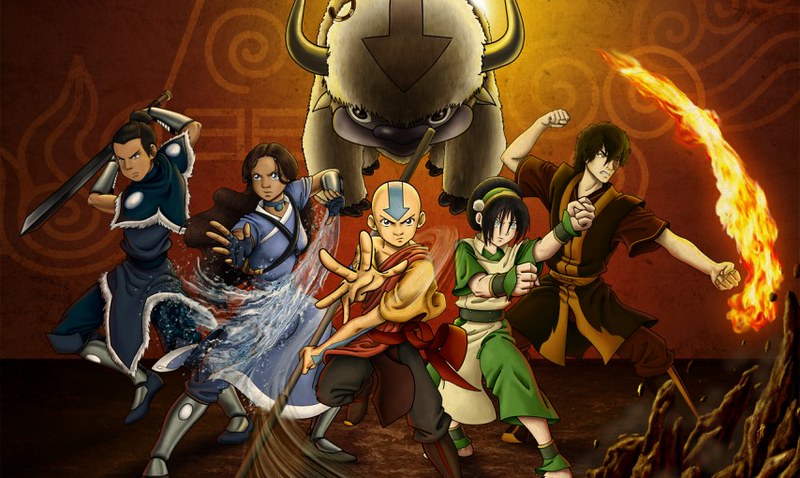“Avatar the Last Airbender” is my favorite show of all time, and I’m not alone. Water, Earth, Fire, Air: The Fire Nation wants to conquer the rest, and only the Avatar, a 12-year-old boy named Aang, can master all four elements and save the world. The show is so popular that it topped Netflix charts for nearly a week after its highly-anticipated May 2020 release — despite first debuting on Nickelodeon as a children’s cartoon 15 years ago. It is, apparently, so perfect that it’s also considered anti-racist: ATLA “Imagines a World Free of Whiteness,” announced a New York Times headline this month.
That’s interesting since two White guys created the show. Rhode Island School of Design graduates Bryan Koniezko and Michael Dante DiMartino teamed up in 2002 with the shared dream of directing something; Nickelodeon told them it was looking for “action and adventure, legend and lore.” Inspired by Harry Potter and Lord of the Rings, Koniezko drew a “cyclops robot monkey,” a “bipedal polar bear,” and a “bald kid” — later becoming the characters Momo, Appa, and Aang. DiMartino had been watching a documentary about Ernest Shackleton’s expedition to Antarctica; hence, their story began at the south pole.
None of this origin story sounds White-free to me. But then, DiMartino and Koniezko added a twist. “We were really into yoga when we started this show, which is probably why we wanted to do something that was Asian influenced,” Konietzko told The New York Times in 2005. Eastern cultures proved a source-material jackpot. To achieve child-appropriate action without violence, they adapted four ancient Chinese martial arts styles as “bending” powers and consulted a Los Angeles-based master who taught in a way “accessible to the Western mind.” To deepen their hero’s inner life, they introduced Guru Pathik to explain the seven chakras. To beautify their branding, they hired Chinese calligrapher Siu-Leung Lee. They also hired South Korean animation studios and cultural consultant Edwin Zane.
Now, ATLA has become an exemplar of cultural appreciation. Never mind the shadowy intimations of White lady yoga appropriation. Or that two White guys trained only in Western music styles wrote the soundtrack using Asian instruments like the guzheng and pipa. Or that White actors voice 14 of the 17 main characters. “When it comes down to it, it was just a very well-written show,” Gene Luen Yang, author of the “Avatar” comic books, told Character Media. “[ATLA] was quintessentially Asian American in the way it blended Eastern and Western cultures. The same way that we, as Asian Americans, are a blend of East and West.” Most argue that Koniezko and DiMartino paid appropriate respect to a culture that was not theirs. They did not pervert it or benefit from it in a way folks of that culture could not.
Indeed, they did their homework. When I watch ATLA, I feel seen. I feel that every one of the few shows which achieve this for Asian Americans must be protected. And yet, I find it hard to reconcile my love of ATLA with the sobering fact that the show has still been transmuted through the White imagination of White creators, White actors, White producers. Its empire of White profit still rests upon centuries of culture that belong to someone else. And while White artists succeed — applauded, for their “creativity” — Asian folks are still kept out of an American industry made nearly as impenetrable to them as the walls of Ba Sing Se. Asian cultures are celebrated. Asian people are not. How is this a world free of Whiteness?
American culture likes to identify its heroes and villains; Koniezko and DiMartino are neither. For me, they are not “canceled.” But contrary to public worship, their work bears harm, too. They have left Asian Americans to help White fans understand that ATLA is not their easy pathway to understanding the East. This show is not theirs. This culture is not theirs. Asian Americans are not reducible to a stiff wedge between White and Black in the American racial dichotomy, or to an “Asiatic-like” cartoon for consumption by everyone.
ATLA, revered for its political themes, may be further analyzed as a complex case study of White entitlement to everything and the exploitation of the East. In the meantime, any critique of ATLA should not be weaponized as an excuse for well-read White audiences to disrupt the pride of Asian Americans like myself, for whom this show remains a beloved masterpiece.
Winona would like to thank Asian American friends Priya Vulchi and Sam Weinglass for inspiring ideas in this piece and deepening her love for the world of ATLA.
Image Credit: “Avatar the Last Airbender” is licensed under Public Domain Mark 1.0



